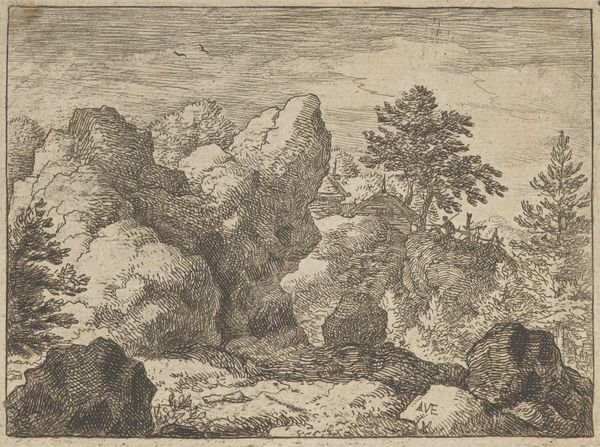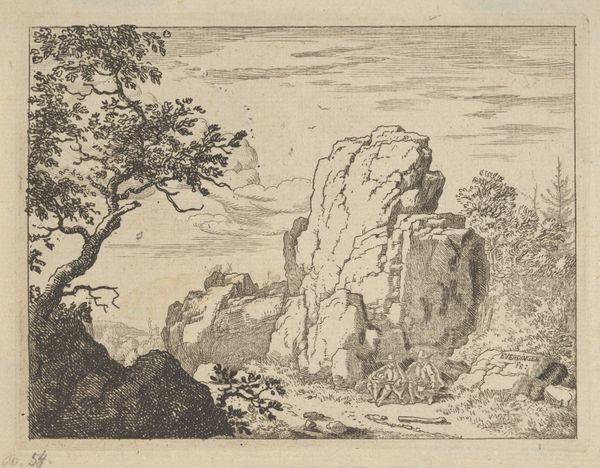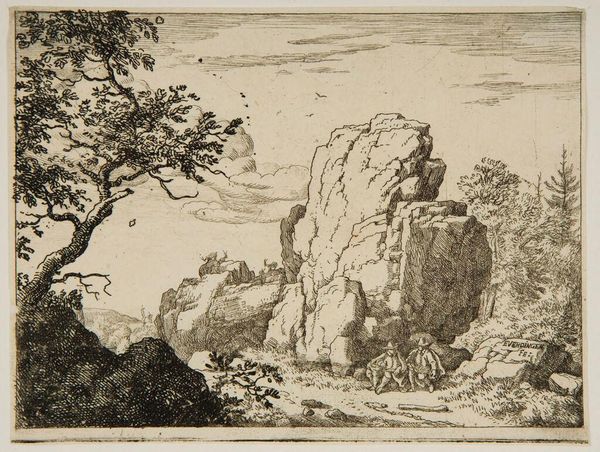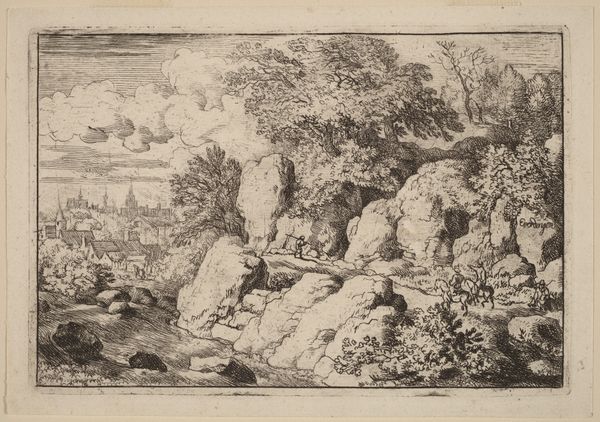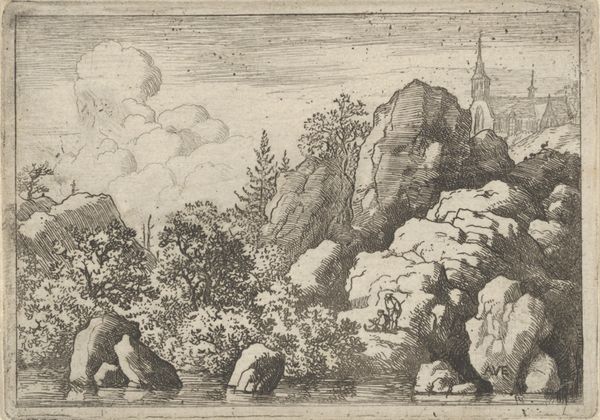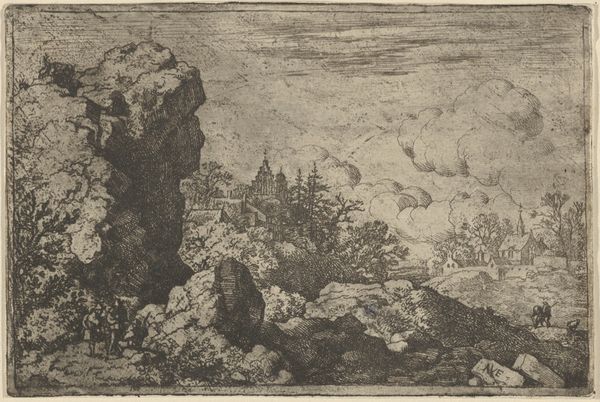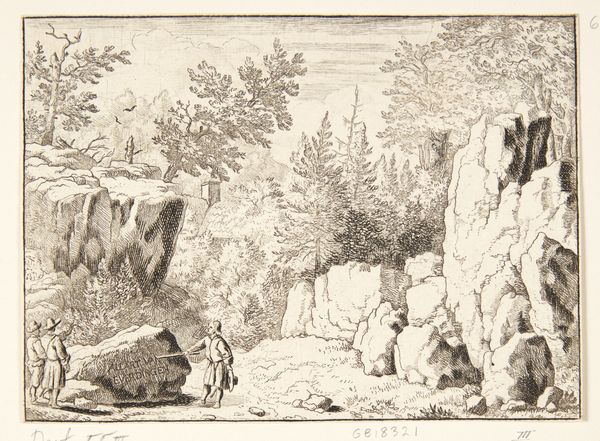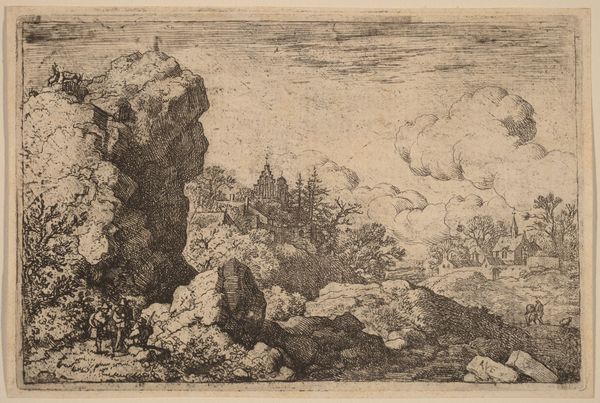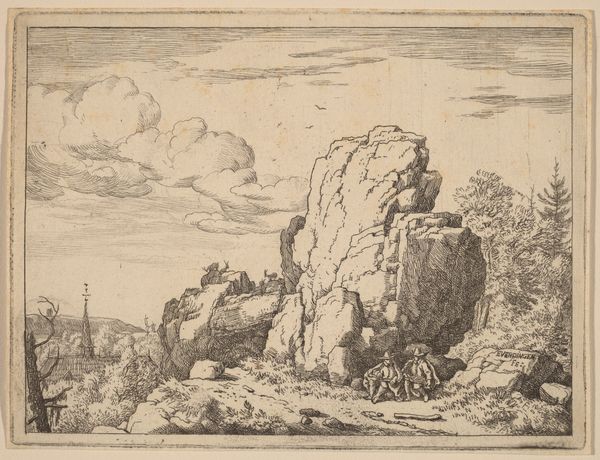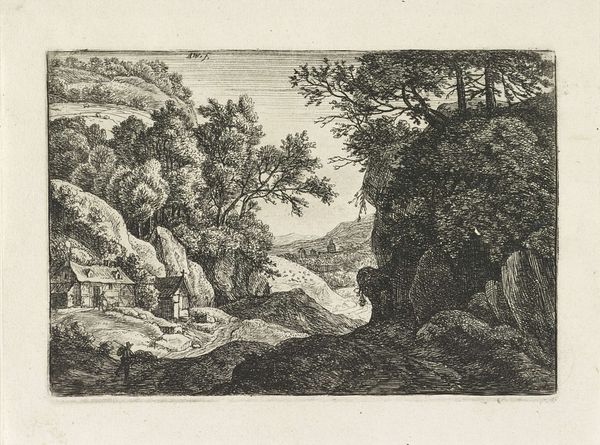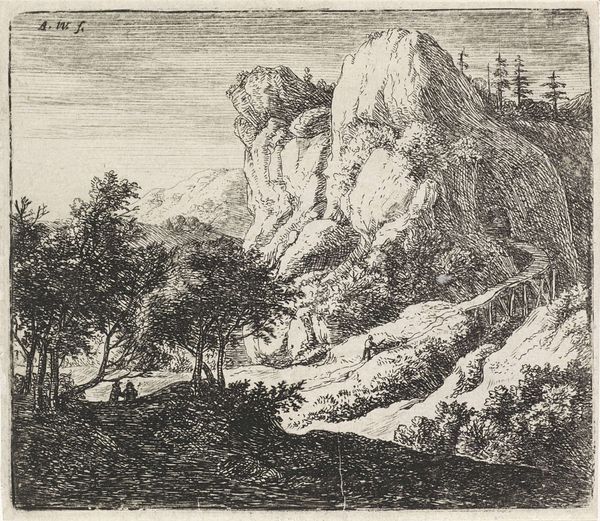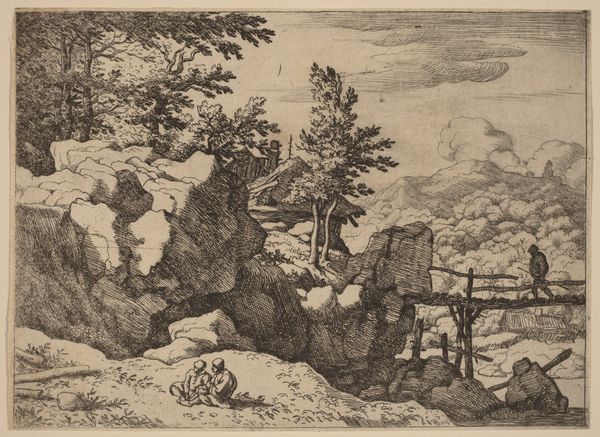
drawing, print, etching, ink
#
drawing
#
ink drawing
#
baroque
# print
#
etching
#
landscape
#
ink
Dimensions: plate: 4 1/16 x 4 3/8 in. (10.3 x 11.1 cm) sheet: 5 1/8 x 7 3/16 in. (13 x 18.3 cm)
Copyright: Public Domain
Editor: This is Allart van Everdingen's "The Large Rock," made sometime between 1621 and 1675. It's an etching, and I'm immediately drawn to the contrast between the immense rock formation and the tiny figures scattered around the landscape. What does this piece evoke for you? Curator: For me, it speaks to the complex relationship between humans and the natural world, especially within the context of 17th-century Dutch society. The "large rock" isn't just a geological feature; it's a symbol of untamed nature, a stark contrast to the ordered, often oppressive social structures of the time. The small figures suggest a yearning for freedom, for escape from those structures. How do you perceive their role within the composition? Editor: I see them as almost overwhelmed by the landscape, like they are seeking refuge in the margins. Curator: Precisely! Think about the power dynamics inherent in this depiction. The vastness of nature dwarfs the individuals, prompting questions about human agency. The "natural world" in European art has a long, troubled relationship with colonialism. Does Everdingen reproduce this tradition here? Editor: I hadn't considered that, but it's interesting to think about how landscapes, even without overt colonial imagery, can reflect a certain power dynamic and privilege. Perhaps this romanticized view of nature is only accessible to certain social classes? Curator: Exactly. Consider who had the leisure time and resources to appreciate and depict these scenes. This seemingly idyllic landscape can also be seen as an ideological construct, reinforcing existing power structures while appearing apolitical. Editor: It’s so interesting to consider those hidden power dynamics within a seemingly simple landscape. I will definitely be looking at these works with a different lens moving forward. Curator: Art invites continuous interpretation and re-evaluation through dialogue!
Comments
No comments
Be the first to comment and join the conversation on the ultimate creative platform.
